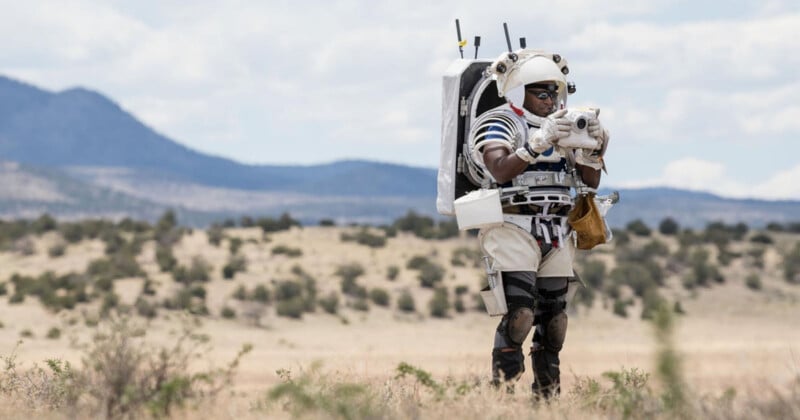![]()
Nikon and NASA have a rich history of collaboration dating back more than 50 years when Nikon supplied specialized analog cameras for Apollo missions. Nikon cameras are headed back to the Moon, and Nikon showed off some of the new lunar-bound technology this week at CES.
PetaPixel reported last February that Nikon and NASA had signed the Space Act Agreement, with Nikon promising support for NASA’s historic Artemis missions through the Handheld Universal Lunar Camera (HULC).
The HULC is built around the Nikon Z9, a camera already used in space aboard the International Space Station (ISS). While the agreement is old news, Nikon showed a new thermal blanket prototype at CES.
 Photo by Josh Valcarcel
Photo by Josh ValcarcelThis blanket will protect and insulate the Nikon Z9-based HULC on the lunar surface, protecting the camera and lens from the harsh environment on the Moon and ensuring the camera can withstand the Moon’s extreme temperature changes.
![]()
When humanity returns to the Moon as part of the Artemis III mission in 2027, astronauts will visit the lunar South Pole region, an unexplored area of the Moon. Photographing there requires a highly specialized camera that can handle the uniquely extreme conditions.
![]()
Alongside the thermal blanket, the HULC features a customized grip with modified buttons that enable operation even when wearing thick spacesuit gloves. The camera will also be modified to withstand the relatively high radiation levels in space.
The Artemis III mission has been in the works for many years and the broader Artemis program is expected to cost many billions of dollars. The last time anyone stepped foot on the Moon was in 1972 during the Apollo 17 mission, so to say it is vital that everything goes according to plan, including concerning the HULC, would be an understatement.
![]()
The Artemis III mission will also be the longest lunar mission ever. Two astronauts will spend about a week conducting various investigations and experiments on the lunar surface. The HULC needs to be able to handle the lengthy trip without fail.
The customized Nikon Z9 they are taking to the Moon not only features different protective equipment and hardware, but the camera functionality itself will be tweaked. Nikon is developing custom firmware that simplifies FTP protocols, optimizes shutter behavior for the environment, improves HDR functionality, and changes the menu layout and file naming structure.
Image credits: Exclusive photographs from CES provided by Nikon USA




/cdn.vox-cdn.com/uploads/chorus_asset/file/25825874/fortnite_festival_multiplayer.png)

 English (US) ·
English (US) ·